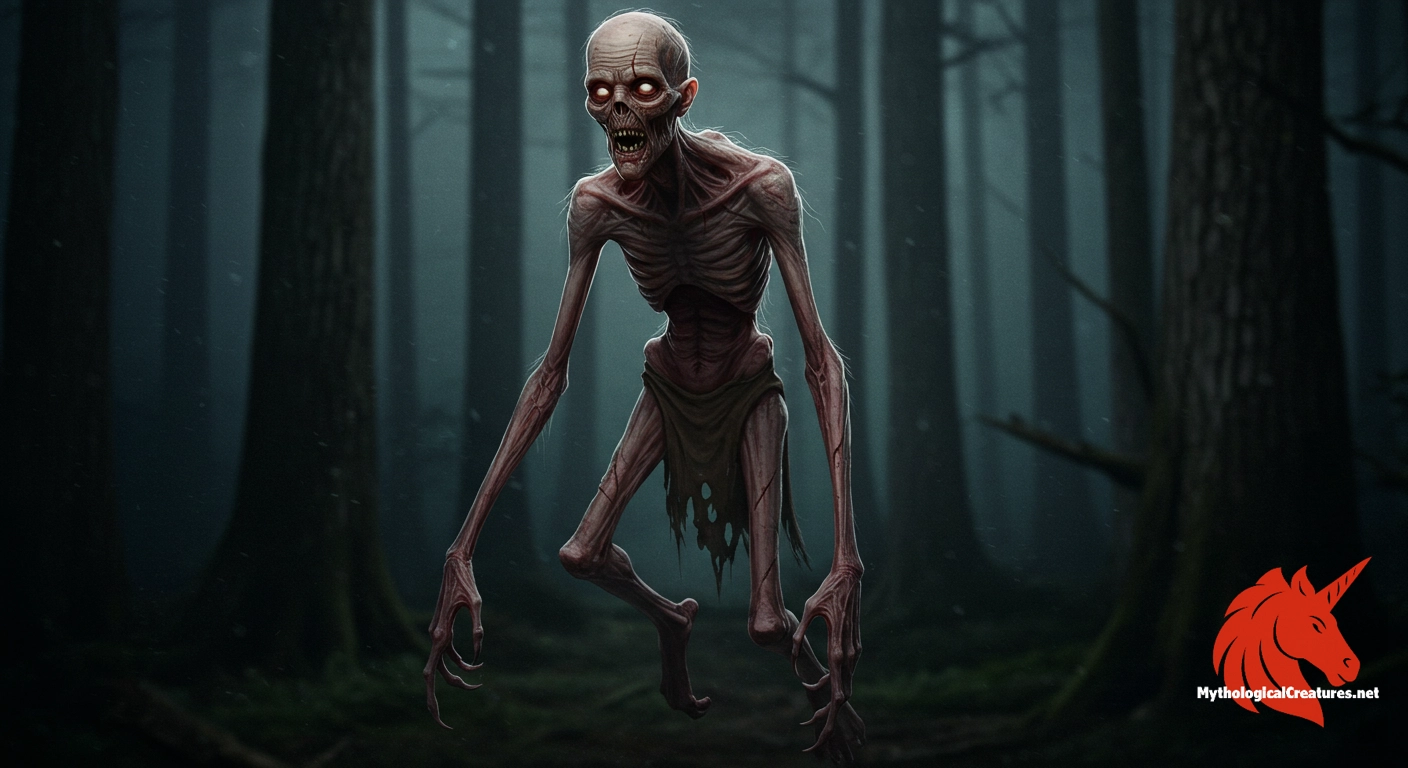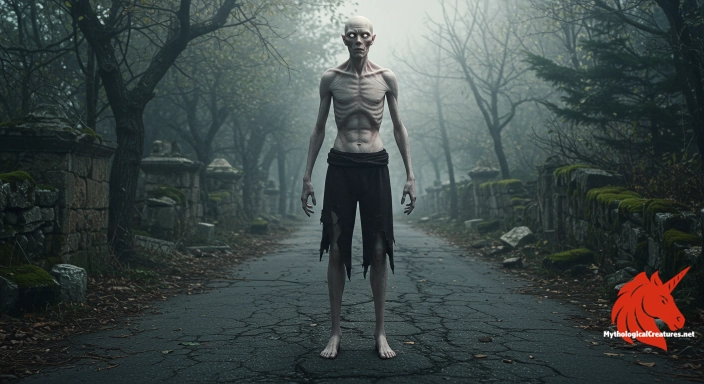Raven Mocker: The Raven Mocker is a malevolent spirit from Cherokee mythology known for preying on those nearing death.

Raven Mocker
Raven Mocker - Serves as a cautionary figure warning against the transgression of natural death rites and the disruption of life's cycle
Origins & First Encounters
In the tapestry of Cherokee mythology, the Raven Mockers stand out as sinister, enigmatic figures whose very existence challenges the boundary between life and death. Their origins are shrouded in mystery, woven into ancient oral traditions passed down through generations of Cherokee elders. They are portrayed as malevolent entities, often described as witches or evil spirits, and are believed to prey on those nearing life's end. The myth illustrates a belief that these creatures can extend their own longevity by preying on the vulnerable, absorbing years from the hearts of their victims. Tales of the Raven Mockers serve as a stark reminder of the inevitability of death as well as the perils of straying from spiritual and social norms. Early attestations of such creatures emerge from a blend of mystical narratives and cautionary folklore, designed to instil respect for the natural order of life. Over time, their image has morphed into a potent symbol of the corrupting influence of unbridled malice, serving as both a warning and a moral parable. Cherokee culture, grounded in a deep spirituality and connection to nature, treats such legends with both fear and reverence, reflecting the complex interplay between the seen and unseen worlds.
Source Texts & Tale Variants
Accounts of the Raven Mockers can be found within a rich corpus of Cherokee folklore that has been preserved over centuries through oral storytelling traditions. Numerous narratives, recorded by early anthropologists and shared by community medicine men, highlight encounters with these eerie figures. While detailed textual evidence is sparse, fragmented references and traditional recountings provide insight into the creature’s role as an omen of death and decay. Variations in the story emerge from different Cherokee communities, each adding unique details to the broad archetype of the Raven Mocker. Some versions recount that only those trained in the traditional medicinal arts can perceive their true form, underscoring a ritualistic element in their myth. These narratives have often been passed down as cautionary tales, emphasising the importance of honouring life’s natural progression. Modern compilations of Native American myth have reassembled these fragments to create a more holistic view of the Raven Mockers. Despite the diversity of sources, a common thread remains in all stories: the portrayal of these beings as eerie harbingers whose presence forewarns misfortune.
Form & Powers
The physical manifestation of the Raven Mocker is as haunting as its mythic reputation, characterised by a withered, almost otherworldly appearance. Many descriptions depict it as an emaciated, aged figure shrouded in decay, with pallid skin that echoes the pallor of death itself. Its eyes are often portrayed as dark, deep-set or even glowing, conveying a glimpse into a soul long corrupted by malevolence. In several narratives, the entity is accompanied by the unmistakable cry of a raven, further enhancing its eerie presence during nocturnal flights. The Raven Mockers are said to traverse the night sky, and in doing so, they merge the physicality of human form with unmistakable animalistic features, as if the spirit of the raven itself has taken corporeal shape. Variability in size and form is noted, with some accounts describing them as seemingly larger than life while others portray a more diminutive, insidious presence. Their physicality reflects the cursed nature of their existence—a grotesque blend of human decay intertwined with supernatural elements. This spectral form is integral to their identity, marking them as beings set apart from ordinary mortals, and ensuring that their appearance instills both dread and fascination.
Regional Faces
The depiction of the Raven Mocker varies subtly across different Cherokee regions, reflecting local adaptations and variations in interpretative emphasis. In some areas, the creature is portrayed with a more ghostly aspect, almost blending with the mists that envelope the Appalachian forests at night. In other communities, the emphasis is on its sinister predatory behaviour, with detailed accounts of its nocturnal vigils and relentless pursuit of the infirm and dying. The ways in which local medicine men recognise and combat these spirits can differ from one region to another, with some communities relying on intricate rituals and others on a profound understanding of natural omens. Moreover, neighboring Native American tribes have their own spirits and legends that share similarities to the Raven Mockers, though their narratives often infuse local colour or additional moral lessons. These regional differences are reflective of a broader tapestry of indigenous spiritual beliefs that adapt to the environmental and cultural context of each community. Despite these variations, a central theme persists: the creature’s role as an agent of malevolence whose very existence challenges the order of life and death. Such regional adaptations enrich the myth, ensuring that while the core narrative remains intact, its expression is as diverse as the lands it haunts.
Cultural Parallels
The Raven Mocker occupies a unique place within the global pantheon of mythological beings, offering interesting parallels to entities found in other cultural traditions. Similar to the vampires of European lore, these figures are reputed to drain life from their victims, absorbing vitality for their own perverse survival. Comparisons might be drawn with the Wendigo from Algonquian mythology, a spirit associated with insatiable hunger and a transformation into a monstrous being, albeit with distinct cultural and spiritual contexts. Unlike the more sensual and seductive image of European vampires, the Raven Mocker is presented as a repulsive, witch-like spectre, embodying decay and moral corruption. Yet, the motif of commandeering another’s life force is a recurrent theme across many cultures, signaling a universal preoccupation with the balance between life and death. Such mythological parallels underscore the shared human experience of confronting mortality and the unknown. The convergence of these themes across disparate cultures calls attention to common existential fears that transcend linguistic and ethnic boundaries. Overall, while each mythological tradition brings its own nuances, the comparison opens a broader dialogue about the human desire to control and quantify the essence of living.
Legacy & Modern Evolution
Over time, the figure of the Raven Mocker has undergone a fascinating evolution, its legacy shifting in response to cultural and historical changes. In traditional Cherokee society, it remained a deeply feared presence, a supernatural cautionary figure designed to encourage respect for the natural order of life and the proper care of the sick. As contemporary society has moved towards modernisation, these ancient tales have been reinterpreted in literature, film, and art, often emphasising the eerie and haunting aspects of the myth. Modern authors and artists occasionally imbue the Raven Mocker with new layers of symbolism, linking it to themes of mortality, the irreversible passage of time, and the corruption inherent in the exploitation of life. This evolving portrayal has allowed the myth to resonate with new audiences, transforming it from a strictly spiritual warning to a broader metaphor for societal decay and the defiance of natural limits. Contemporary interpretations sometimes blend the ancient mystique of the creature with modern horror tropes, creating hybrids that are both visually striking and conceptually complex. Nevertheless, traditional Cherokee narratives continue to maintain their influence, serving as a bridge between ancestral wisdom and modern myth-making. The enduring legacy of the Raven Mocker is a testament to the power of myth in addressing universal human concerns about death, decay, and the interplay between life and the supernatural.
Interesting Fact
One interesting fact about the Raven Mocker is that its apparent quest for immortality is intertwined with a fatal vulnerability: recognition of its true form leads to its rapid demise.
Quick Creature Info
Origin:
Features:
Associations:
Our Mythic Legendary Rating:

Habitat:
Supernatural Powers:
Physical Attributes:
Abilities:
Behavior:
Weaknesses:
Lore:
Related Creatures, Tales or Lore
References
Discover Another Mythical Legend You May Not Have Heard Of?
Uncover the mysteries of ancient folklore and expand your knowledge of legendary beings from cultures around the world.
Dare to Meet the Uylak....
Curated by the Mythological Creatures Team (rev. May 2025)
